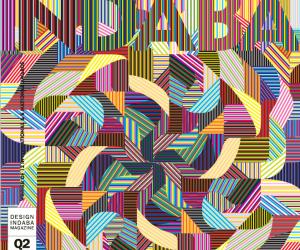First Published in
Utopian visions of clean, civilised, alternative energy sources are everywhere, but as we all know, reality doesn’t always ride off into the sunset on a flying car. What if, in the future, children are put to work to produce hydrogen in exchange for pocket money? Or human faeces becomes an energy source and lunchboxes are compartmentalised for “food” and “poo”? Or if through microbial fuel cells, teddy bear-shaped “gastrobots” use human and hamster blood to charge home appliances?
“Each scenario is based on a real technology and simply asks what would happen if this became the main form of energy in the not too distant future,” Fiona Raby explains her and Anthony Dunne’s Is This Your Future? series. Created for an energy exhibition at the London Science Museum, the series was pitched at children between the ages of seven and 14. As such, it set out to be decidedly playful and cheeky, rather than typically didactic and educational.
“Everywhere we look we see images showing how bright our technological future will be once we embrace new energy sources like hydrogen. But things are not so simple, with every new technology there are other consequences – economic, cultural and ethical,” continues Dunne.
Using exaggeration and speculation, the work of the Dunne&Raby design studio might be dismissed as despotic science fictions, however they prefer to call them “value fictions, rather than science fictions”. Speculation, not functionality is key to their work. From their most recent exhibition, Do You Want to Replace the Existing Normal?, a Statistical Clock alerts to technologically mediated fatalities through car, train, plane, etc; a SOCD (Sexual Obsessive Compulsive Disorder) porno watching device pixelates the screen according to the level of arousal; a Risk Watch speaks a number corresponding to the political stability of the country you’re in; and an Alignment Gauge explodes pinkness randomly for the owner to interpret as a sign – it could be about love, money or career.
“We don’t view the object as a transmitter of meaning to be decoded by a viewer, but as a prompt, a thing to be engaged with… Things have to be not-quite-right; this awkwardness is a way into the object, an invitation to explain why it is the way it is, why it’s ‘not quite right’,” explains Dunne.
“This kind of design exists in a very interesting space between problem solving and commentary. The former tries to change or fix the world while the latter is directed at changing perception, and therefore values and behaviour. The current global crisis is much deeper than a technical one, we cannot just redesign the planet to suit how we live today. We need to rethink how we live, and that means we have to seriously rethink our values,” writes Raby in an email.
She continues: “Technologists constantly espouse the idea that we’re all perfect human beings who behave brilliantly, which we find naïve. We’re selfish, we’re greedy, we’re messy, we’re lazy. We kill people and behave appallingly. These human traits need to be integrated into our utopian futures – and that’s what our work explores.”
Unpalatable and inevitable human traits seem to be the point – there are no Hollywood fairytales in their reality. Indeed, according to these two, “happy ending” does not automatically follow from “design” or “technology”. Certainly not on the current consumer model of product meets economic need, nor even on the more cynical view of products marketing needs. These are the “functional products that meet fictional needs” that Dunne&Raby counter with their “fictional functions and functional fictions”.
Quite a tongue twister, Dunne explains: “We believe design can be used as a reflective and critical medium, which is at odds with the current understanding of design as a way of making things sexy and consumable, at least in relation to new technology. Once you decouple design from the marketplace it has nowhere to go.”
“User-centred” and “user-friendly” design is what he has problems with: “It isn’t just about user-friendliness, but embodying a specific idea of human nature – a recognition of how we like to live, what we like to do, how we really are.” Dunne&Raby have a more complex view of “humans” than merely as “users”. In fact they’re more prone to promote “abuser-friendliness” that allows for interpretation and creative misuse of products, such as their early 1990s work for Sony that repurposed walkmans and car radios to tune into environmental sounds.
The pair has been working together since the early 1990s after spending three years in Japan during the golden age of electronics. Before this, Dunne had completed a Masters in computer-related design and Raby a Masters in architecture. Upon returning to London in 1992, they were struck by the utilitarian industrial and sparse electronic industries in Europe and Great Britain. Seeking to further explore the impacts of the impending growth of technology, the pair enrolled for post-graduate research at the Royal College of Arts and here began their quest into the untold stories of products.
Says Dunne: “Much of today’s design derives its cultural value and meaning from ‘narratives of production’. How it was made and how the designer exploited new materials and processes, drives everything. The stories told about many objects stop at the point the object actually comes into being. With our work, that’s exactly when the story begins. We’re far more interested in ‘narratives of consumption’: how objects enter people’s lives and the meanings that arise from their interactions with those objects."
Some of their earlier work is not so much about technology as general modernisation and changing lifestyles. Weeds Aliens and Other Stories presents psychological furniture for the home and garden. This includes the Garden Horn, for talking to plants, and the Rustling Branch, a vase alternative that simulates foliage moving in the wind. In turn, Park Interactives proposes a range of adult furniture for the Medici Gardens in Rome. Single and attached adults are facilitated in meeting and playing after dark in a public space through user-friendly, efficient and ergonomic park fittings. “We are also interested in whether the public can be encouraged to misbehave when confronted with furniture designed to support illicit activities,” they say.
Raby develops the idea: “The emotional spectrum within design is pretty narrow, genres such as sexuality, horror, anxiety, paranoia etc are not normally included. I think we are very attracted to unacknowledged behaviours, and finding ways to celebrate them. It’s almost as if behaviours that become embodied into ordinary things somehow become legitimised.”
Envisioning women storing DNA samples of their sexual partners, Dunne&Raby’s Evidence Dolls was a research project commissioned by the Pompidou Centre in Paris. A sample group of single women were interviewed about their love lives and whether they could conceive of using the dolls, which in turn opened the subjects to revealing their feelings on the future of genetics with regards to designer babies, desirable genes, mating logic, DNA theft and such.
As such, Dunne is quite insistent that design is outdated: “The world we live in today is incredibly complex – our social relations, desires, fantasies, hopes and fears are very different from those at the beginning of last century. The role technology plays today in shaping our experience of everyday life is unprecedented. Yet many key ideas underpinning contemporary design practice stem from the early 20th century.”
In their non-functional robots designed for the Technological Dreams series, Dunne&Raby ask not that the viewer imagines what robots will do in the future but how we will relate to them. Rather than envisioning the vacuum robot, chauffeur robot, surrogate child robot, walking encyclopedia robot, anthropomorphic robot or even sex robot that popular science has already filled our subconscious with, Dunne&Raby present robots “not as super smart, functional machines, nor as pseudo life forms, but as technological cohabitants”.
“[The robots] borrow from the world of product and furniture design, though they’re obviously not either. It’s not about the systems organisation and it’s not about the slave thing – having them do all your jobs for you. It’s about how robots might exist with us on a day-to-day level at an intimate domestic scale,” explains Raby in the post-exhibition press.
It’s about how we relate to these objects and this technology. And “relation” is the keyword in the designing interactions department at the Royal College of Arts in London, where Dunne is head of department and Raby a faculty member. Previously known as the interaction design department, the name was changed in 2006 to announce a new curriculum that broadened the focus from merely digital interactions to other technologies too.
“Designers shouldn’t let the fact that we can’t build working prototypes prevent us from engaging with emerging technologies like bio- and nanotech. Just because we can’t get our hands on these technologies (yet) doesn’t mean we shouldn’t get involved with them,” insists Dunne. “How, as designers, can we even begin to engage with this invisible technology as ‘material’?”
RCA students have completed radical projects under the pair’s guidance – maggots that clean up wounds after surgery; biophilia clinics where people enhance their immune systems by increasing their exposure to dirt and microbes; human body pharming in which people volunteer to produce chemicals for medicines; hormone sensing bees that can be used for medical diagnosis; a sensual pile of semi-organic beadsthat functions as a keyboard; dressing futuristic meat that might be grown through tissue engineering; and animals as life-support systems. These are not real products or predictions, but visualisations of possibilities.
Nor is it as rocket-sciencey as it sounds – no industrial designer is about to cure cancer. It’s about engaging and interfacing with scientists and using creativity to present the future results of scientific research through design. Says Dunne: “It is still about form and function. Just that the form might no longer be physical or tangible, and functions might not be so pragmatic but instead, more metaphysical. Design can only follow our needs and desires, it can’t create them. If our desires remain unimaginative and practical, then that is what design will be.”
This hypothetical approach to design does not relegate it to “art”, nor halfway in between. “It is definitely not art. It might borrow heavily from art in terms of methods and approaches but that’s it. We expect art to be shocking and extreme. Critical design needs to be closer to the everyday, that’s where its power to disturb comes from,” asserts the couple. In fact they’re rather scathing of design art, reprimanding “these mute, autistic objects [that] radiate ignorance of the world around us, they’re apolitical and content free”.
Dunne makes a good case: “One of the strengths of design over art and science in relation to technology, is that it can pull new technological developments into imaginary but believable everyday situations so that we can debate the social cultural and even ethical consequences of new technologies before they happen and try to ensure that the most desirable futures are realised.”
In a move away from the self as centre of the universe, Dunne&Raby seem to be proposing that relations, rather than individuals, build a healthier organism. Like a semi-conscious ant colony, the world is given greater being as a whole, through its connections and acknowledgment of its true humanity, rather than chasing the ideal and new.
As Dunne said at the Design Indaba Conference: “I don’t think design can save the world as in the modernist’s dream that it could somehow improve or change the world. One of the shifts that is happening is that we have to change ourselves – adjust ourselves to the world. The traditional view has been to look at ourselves and shape the world in our image, but now we have to shape ourselves in the world’s image. Design needs to facilitate that in some way.”









